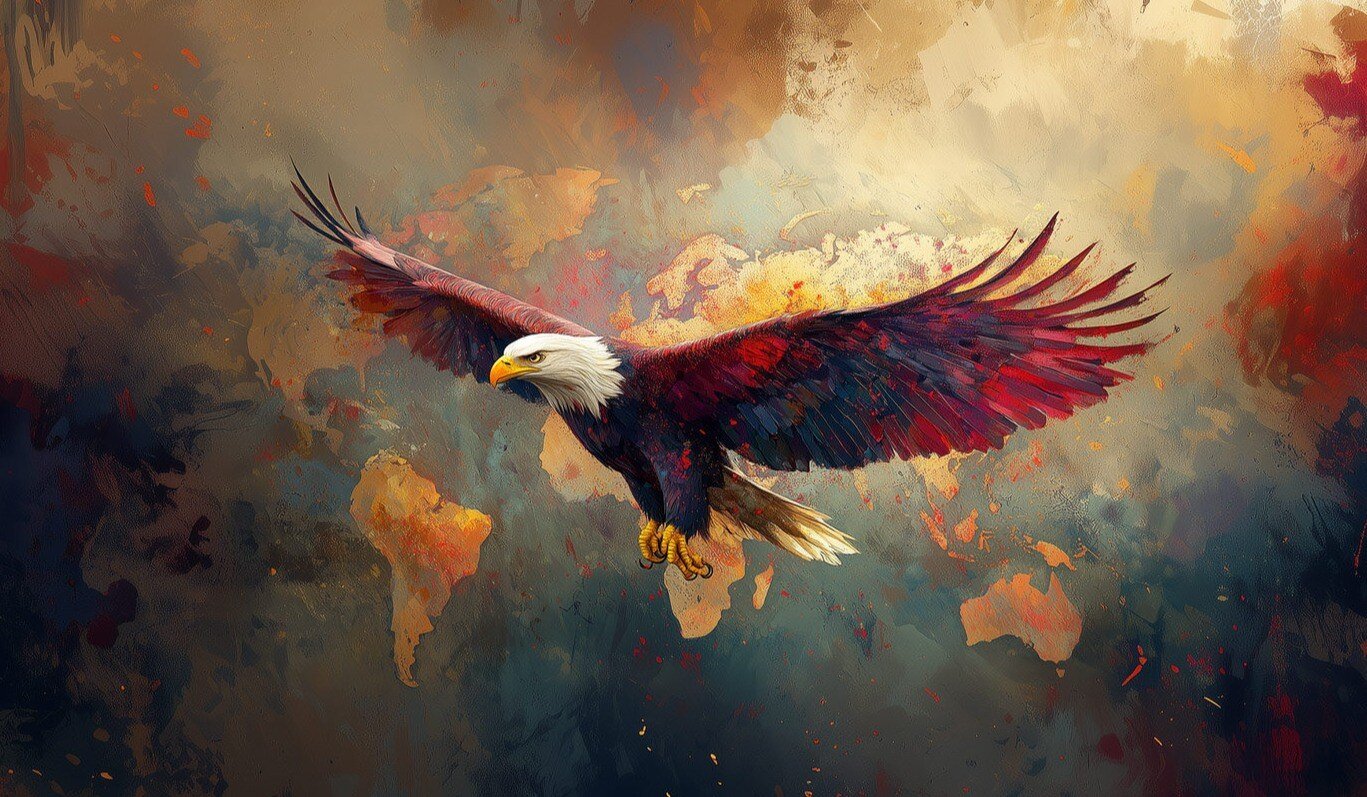
Kangaroo
Nurturing spirit, Protection and Fortitude.

- Cards
- Spirit Animals Oracle Deck
- Kangaroo
Discovering The Kangaroo Spirit
The kangaroo, with its unique and graceful bounding movements, symbolizes a nurturing spirit, protection, and fortitude to carry life's burdens. Its powerful medicine lies in creating a safe and supportive space for others, enabling them to face challenges with unwavering resilience and finding solace in the embrace of its protective care.
Its spiritual energy embodies the essence of protection, creating a shield of safety for those in its presence. Just as a mother kangaroo cradles her joey in her pouch, the kangaroo's medicine offers a haven of warmth and comfort, reassuring others that they are not alone in their struggles.
With a heart full of compassion, the kangaroo's nurturing essence becomes a source of strength for those seeking support. Like the gentle embrace of a mother's arms, the kangaroo's spiritual energy encourages individuals to seek solace and guidance in times of need. In the kangaroo's presence, we find the courage to face adversity with a sense of security, knowing that we have a steadfast companion on our journey.
The kangaroo's spiritual energy also teaches us the significance of nurturing and caring for the younger generations. As it guides its joeys with gentle encouragement, we are reminded of the importance of providing guidance and support to the next generation. In this way, the kangaroo's wisdom becomes a timeless legacy, passed down through the ages. Its gentle spirit serves as a constant reminder to create a safe space for others, to support them through challenges, and to nurture the bonds of unity and compassion.
Prefer to listen to this article?
Check out our podcast!
Newsletter
Keep reading ↓
- Spirit Animals ↓
- See All
- Alligator
- Anaconda
- Ant
- Arabian Oryx
- Beaver
- Bee
- Beetle
- Black Bear
- Buffalo
- Butterfly
- Camel
- Cat
- Cheetah
- Chimpanzee
- Condor
- Coyote
- Crab
- Dog
- Dolphin
- Dove
- Dragonfly
- Elephant
- Elk
- Emu
- Falcon
- Flamingo
- Fox
- Frog
- Gazelle
- Giraffe
- Goose
- Gorilla
- Grasshopper
- Hawk
- Hedgehog
- Hippopotamus
- Horse
- Hummingbird
- Hyena
- Jaguar
- Kangaroo
- Kiwi
- Koala
- Koi Fish
- Komodo Dragon
- Kookaburra
- Ladybug
- Lamb
- Lemur
- Lion
- Lizard
- Llama
- Manatee
- Mandarin Duck
- Meerkat
- Monkey
- Moose
- Mountain Goat
- Mouse
- Nightingale
- Octopus
- Orca Whale
- Otter
- Owl
- Ox
- Panda
- Panther
- Parrot
- Peacock
- Polar Bear
- Quetzal
- Rabbit
- Raccoon
- Raven
- Rhinoceros
- Rooster
- Salmon
- Sea Turtle
- Seahorse
- Shark
- Sloth
- Snake
- Snow Leopard
- Spider
- Squirrel
- Starfish
- Swan
- Tiger
- Tortoise
- Whale
- Wolf
- Wombat
- Zebra
What Does The Kangaroo Represent?
Kangaroos possess a fascinating array of qualities that make them unique and well-adapted to their environment. One of their most notable features is their powerful hind legs, which enable them to hop at incredible speeds and cover vast distances efficiently. This hopping motion is not only their primary means of locomotion but also allows them to conserve energy in their arid and often harsh Australian habitats.
Kangaroos are also known for their incredible strength, as they can leap great heights and distances, reaching speeds of up to 35 miles per hour. This agility and speed serve as essential defense mechanisms against predators and contribute to their survival in the wild.
Additionally, kangaroos are marsupials, and females have a unique pouch where they carry and nurture their underdeveloped joeys after birth. This pouch provides a safe and nurturing environment for the young, allowing them to continue their development outside of the womb.
Kangaroos are herbivorous grazers, mainly feeding on grasses and vegetation. Their specialized digestive system enables them to extract maximum nutrition from the sparse and sometimes tough plant matter found in their habitat.
Their social behavior is another intriguing quality. Kangaroos typically live in groups known as mobs, and they exhibit complex social hierarchies. These social structures help ensure cooperation and protection within the group, particularly in challenging environmental conditions.
With their large ears and acute sense of hearing, kangaroos are also highly alert to their surroundings, capable of detecting potential threats or predators from a distance.
In summary, the kangaroo's remarkable qualities, including their powerful hopping ability, unique reproductive adaptation, herbivorous diet, and complex social behavior, make them an iconic and admired symbol of the Australian outback and a testament to the wonders of evolution in the animal kingdom.
Keep reading ↓
Supporting content
Cultural and Mythological Significance Of The Kangaroo Spirit
The kangaroo holds significant cultural and mythological significance in Australia, where it is not only an iconic national symbol but also plays a vital role in the cultural narratives of Indigenous Australian communities.
For many Indigenous Australian groups, the kangaroo is a symbol of survival, adaptability, and resourcefulness. Its ability to thrive in the harsh and arid Australian landscape has made it a revered and respected animal, representing the resilience of Indigenous peoples and their deep connection to the land.
In Aboriginal Dreamtime stories, the kangaroo features prominently in creation myths and spiritual beliefs. These stories often depict the kangaroo as a clever and cunning creature, teaching important lessons about survival, the cycles of nature, and the interconnectedness of all living beings.
The kangaroo's cultural significance extends beyond Indigenous folklore. It has become a powerful national symbol, representing the Australian identity and the spirit of the country. The kangaroo appears on the Australian Coat of Arms, official currency, and various emblems and logos, signifying pride, strength, and unity as a nation.
The kangaroo's image is also commonly used in Australian popular culture, featuring in art, literature, and sports. It is often associated with notions of freedom, exploration, and adventure, capturing the essence of the vast and diverse Australian landscape.
Additionally, kangaroos are highly regarded in modern Australian wildlife conservation efforts. They are protected under various laws and regulations to ensure their survival and well-being in the wild.
The cultural and mythological significance of the kangaroo reflects its central place in the collective imagination of the Australian people. Its symbolism embodies the country's rich history, natural beauty, and spiritual connections to the land, making the kangaroo a cherished and enduring emblem of Australia's cultural identity.
Keep reading ↓
Supporting content
A Kangaroo In My Deams
Dreams about kangaroos can hold various symbolic meanings, depending on the context of the dream and the dreamer's personal associations with kangaroos. Generally, a kangaroo in a dream may represent strength, resilience, and the ability to overcome challenges. Just as kangaroos possess powerful hind legs and can leap great distances, seeing a kangaroo in a dream might suggest that the dreamer has the strength and agility to navigate through difficult situations in their waking life.
The kangaroo's association with pouches and maternal care may also symbolize nurturing and protection. Dreaming of a kangaroo could indicate the dreamer's desire to provide support and care for loved ones or to seek nurturing and protection from others.
In some cases, a kangaroo in a dream might be a reminder to embrace one's unique abilities and adaptability. Kangaroos are known for their unique hopping movement and ability to thrive in diverse environments. Seeing a kangaroo in a dream may encourage the dreamer to embrace their individuality and to adapt to new circumstances with grace.
Alternatively, the presence of a kangaroo in a dream may hold cultural or personal significance. For individuals with connections to Australia or Indigenous Australian heritage, the kangaroo in a dream could represent cultural roots, a sense of belonging, or a connection to nature and the land.
As with all dreams, the meaning of seeing a kangaroo is highly personal and subjective, shaped by the dreamer's experiences, emotions, and subconscious mind. It is essential for the dreamer to reflect on the dream's specific details and their own feelings and associations to uncover the deeper messages and insights that the kangaroo symbolizes in their dream.
Keep reading ↓
Habitat, Behaviours and Ecological Importance Of The Kangaroo
Habitat:
The kangaroo, native to Australia, inhabits a diverse range of habitats across the continent. Commonly found in open grasslands and savannas, kangaroos utilize their powerful hind legs to hop and move swiftly in these open spaces, where they can graze on abundant grasses and vegetation. They also inhabit woodland and forested areas, seeking both shelter and food in the form of leaves and plants. Remarkably, kangaroos are well-adapted to arid and semi-arid regions, where they can obtain water from their food sources, allowing them to survive in environments with limited water access. From coastal regions to mountainous areas, kangaroos showcase their adaptability, living in various landscapes and making them an integral part of Australia's diverse ecosystem.
Behaviours:
- Hopping: One of the most distinctive behaviors of kangaroos is their hopping movement. Using their powerful hind legs, kangaroos can cover large distances in a series of energetic leaps, reaching speeds of up to 35 miles per hour. This unique mode of locomotion allows them to conserve energy while navigating their expansive habitats.
- Social Structure: Kangaroos are social animals that live in groups known as mobs or troops. Within these groups, there is a complex social structure, with dominant males leading and protecting the group. Female kangaroos, known as does, play a crucial role in nurturing and raising their young, known as joeys.
- Boxing: During mating season or when competing for resources, male kangaroos may exhibit a behavior known as boxing. This involves standing on their hind legs and using their muscular forelimbs to deliver swift and powerful punches to their rivals. Boxing serves as a way to establish dominance and resolve conflicts within the group.
- Reproductive Strategy: Kangaroos have a unique reproductive strategy. Females typically have one offspring, called a joey, at a time. After giving birth, the tiny, underdeveloped joey crawls into the mother's pouch, where it continues to develop and nurse for several months. Once the joey becomes more independent, it will start to venture out of the pouch and eventually leave to explore the world outside.
- Resting Posture: When resting, kangaroos adopt a characteristic sitting posture by balancing on their strong tail and using their tail as a third leg for support. This posture allows them to take the weight off their hind legs and conserve energy while resting. It also gives them stability when sitting for extended periods.
Ecological Importance:
The kangaroo holds significant ecological importance in the Australian ecosystem. As herbivores, kangaroos play a crucial role in shaping the vegetation and maintaining the balance of plant communities. Their grazing behavior helps control the growth of grasses and plants, preventing overgrowth in certain areas and promoting plant diversity. Additionally, by consuming a variety of vegetation, kangaroos aid in seed dispersal, spreading plant seeds throughout their habitats and contributing to forest regeneration. Moreover, kangaroos are a vital prey species for a range of predators, including dingoes and large birds of prey. This predation helps regulate predator populations and maintain a healthy balance within the food web. As a keystone species, kangaroos influence the structure and function of the ecosystem, and their presence is critical to the overall health and stability of the Australian environment.
Keep reading ↓
How the Kangaroo Contributes To Scientific Research
With its unique reproductive system, kangaroos have greatly advanced our understanding of marsupial biology; the pouch-bound development of joeys offers a distinct contrast to placental mammals, enhancing studies in reproductive biology and embryonic development. Their specialized locomotion, characterized by powerful and efficient hopping, has been a subject of biomechanical investigations, yielding revelations about energy conservation in movement. Additionally, as a species adapted to the vast and often arid Australian continent, kangaroos contribute to research on physiological adaptations to water and food scarcity.
Keep reading ↓
Complement your ritual with...
Binaural beats!
Guided Visualization To Connect With The Kangaroo Spirit
- Find a quiet and comfortable space where you can relax without distractions. Sit or lie down in a relaxed position, close your eyes, and take a few deep breaths to center yourself.
- Imagine yourself standing in the vast Australian outback, surrounded by the breathtaking beauty of the landscape. Feel the warmth of the sun on your skin and the soft breeze brushing against your face.
- As you explore this sacred land, you notice a magnificent kangaroo gracefully hopping towards you. Its powerful presence radiates a sense of strength, resilience, and wisdom.
- The kangaroo stops before you, looking into your eyes with deep understanding. You sense a profound connection with this majestic creature and feel a surge of energy flowing between you.
- With a gentle nod, the kangaroo invites you to join in its rhythmic hopping. As you mirror its movements, you feel a newfound sense of agility and freedom. With each hop, you release any burdens or worries, feeling lighter and more grounded.
- The kangaroo takes you on a journey through the vast landscape, guiding you to discover the hidden beauty and wisdom of the land. As you hop together, you notice the intricate balance and harmony of nature, the delicate dance between predator and prey, and the resilience of life in the face of challenges.
- As you continue to connect with the kangaroo spirit, you feel a profound sense of inner strength and adaptability. The kangaroo's energy infuses you with the ability to navigate through life's ups and downs with grace and confidence.
- In this moment of connection, you feel a deep reverence for the land and its inhabitants. The kangaroo imparts its ancient wisdom to you, reminding you of the importance of staying connected to the natural world and honoring the delicate balance of life.
- As the journey comes to an end, the kangaroo gazes at you with a knowing look, as if to say that its spirit will always be with you. With a heart full of gratitude, you bid farewell to your kangaroo guide.
- Slowly, bring your awareness back to the present moment, taking a few deep breaths. Carry the wisdom and strength of the kangaroo spirit with you as you move through life, knowing that you are forever connected to the sacred energy of the Australian outback and the majestic spirit of the kangaroo.
Shop
Connect with the essence of our Spirit Animals!

Beach Towel
Buy Now

Sherpa Blanket
Buy Now

Flag Wall Art
Buy Now

Oracle Decks
Buy Now
From Our Blog
Stay up to date with our latest articles!

What Leadership Really Means (And What We’re Forgetting)

Brains, Hearts & Bold Moves with Lara Stalquist

What’s Really Worth Stressing About? Reclaiming Your Peace In A World That’s Always “On”
Please note:
It is crucial to acknowledge that the symbology and interpretations can differ greatly among various cultures, religious ideologies, and individual viewpoints. The significance and comprehension of these spirit animals may vary depending on the particular mythological backdrop or the spiritual and philosophical framework through which they are approached. The descriptions of these Oracle Cards are based on information gathered from various sources. Our aim is to provide an overview and a fictional interpretation and we cannot guarantee the accuracy or completeness of this information. The artwork featured on these Oracle Cards have been crafted by digital artists and designers, Relmi Damiano and Sacha Damiano, in conjunction with Artificial Intelligence that has been enhanced by human intervention. The visual imagery serves as a fictional representation of some of the symbols associated with these goddesses throughout history.

